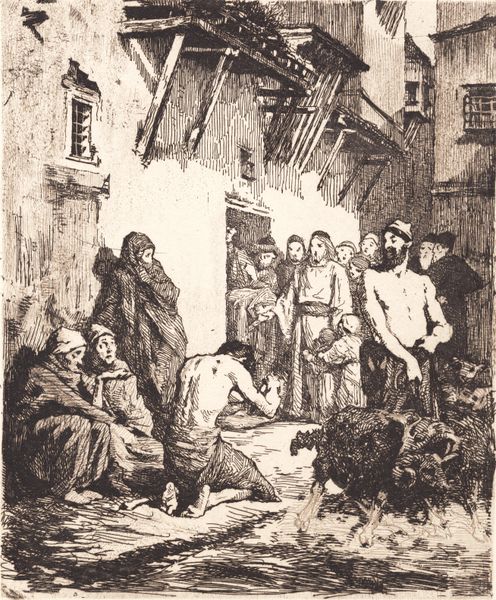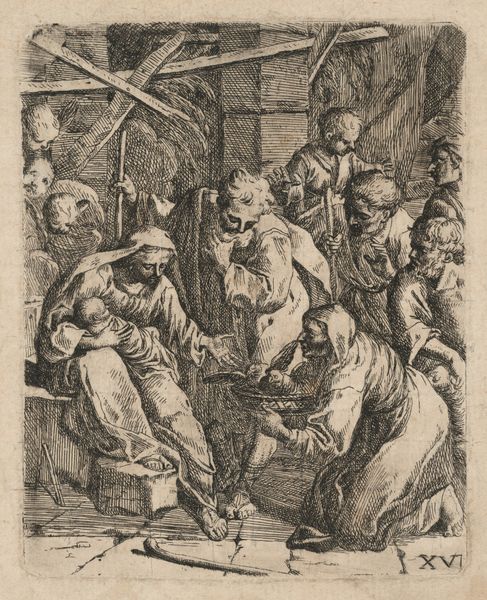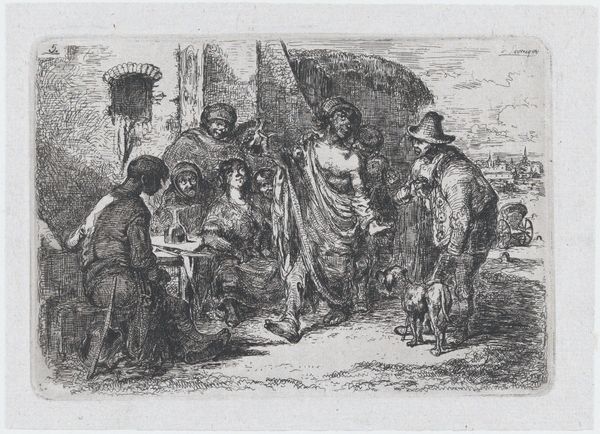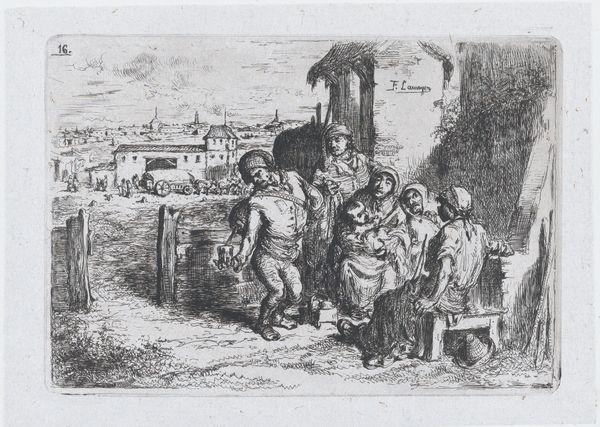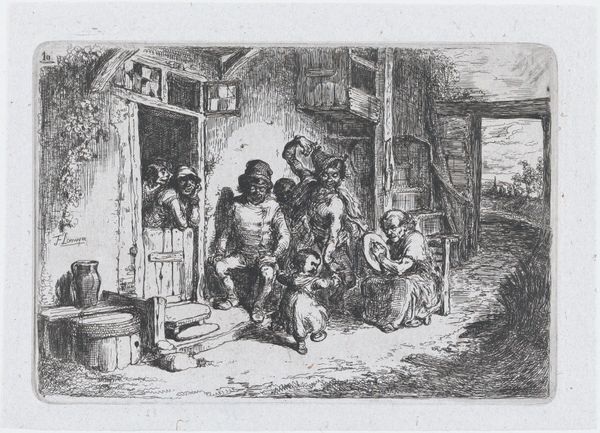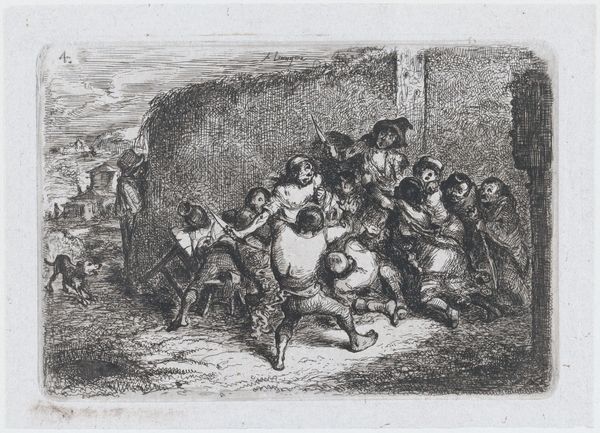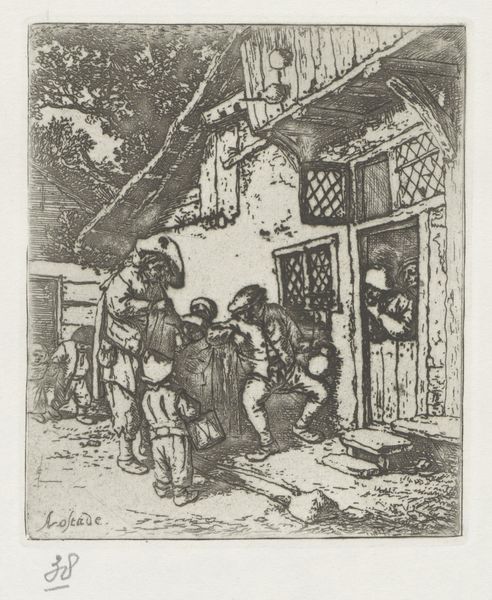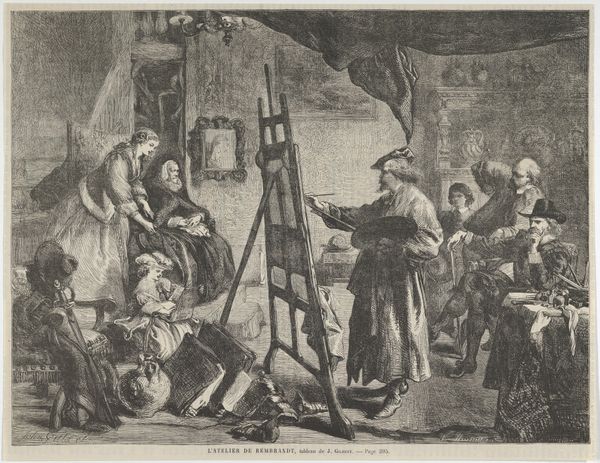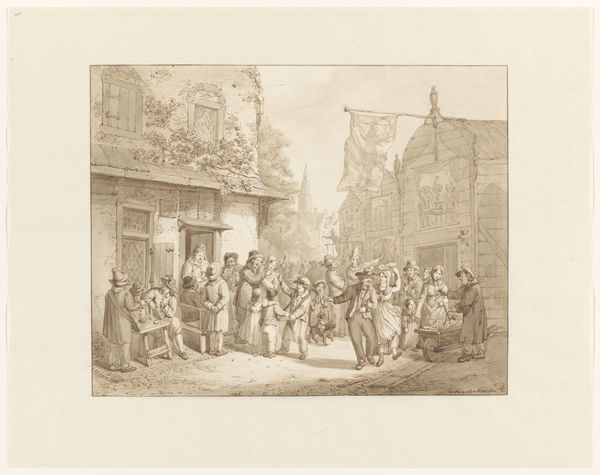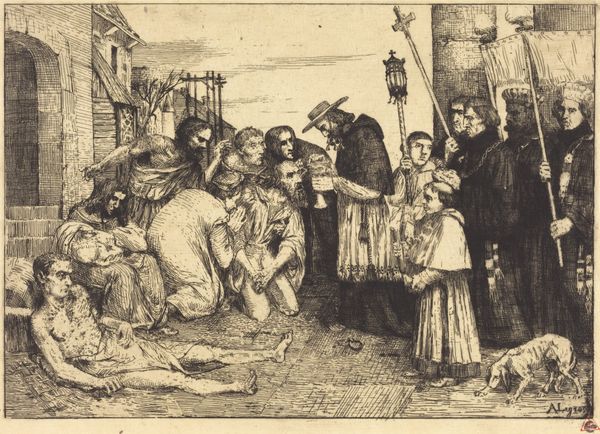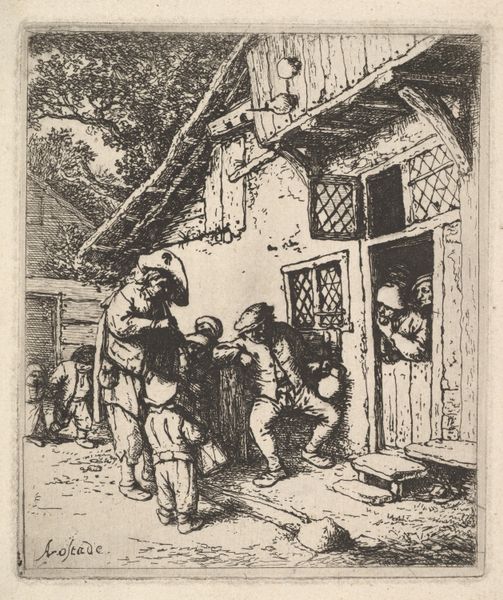
drawing, print, etching, ink
#
drawing
#
ink drawing
#
narrative-art
#
pen drawing
# print
#
etching
#
ink
#
history-painting
Dimensions: 199 mm (height) x 165 mm (width) (plademaal)
Editor: So, this is Frans Schwartz's "Christ Healing the Blind and a Possessed Man," an etching in ink, made sometime between 1865 and 1917. It has a kind of gritty, almost unsettling feeling, but it also feels very…human, I guess? What do you see in this piece? Curator: The beauty of Schwartz's printmaking lies in its raw depiction of social realities. The print captures a moment of presumed divine intervention amidst profound human suffering. Note the stark contrast between the relatively well-clothed figures around Jesus and the figures of the marginalized - those who are blind, possessed, kneeling and begging. How might we understand this representation in the context of 19th-century societal attitudes toward disability, poverty, and mental health? Editor: I see what you mean. It's like, the composition itself is highlighting a societal divide, right? Like who is deemed worthy or clean. Curator: Precisely. The very act of representing the scene in such detail—the textures of clothing, the expressions of desperation—forces us to confront uncomfortable truths about power dynamics and exclusion. Does the print critique societal norms that lead to marginalization or reinforce the idea that divine intervention is the only recourse for those in desperate circumstances? Editor: I think maybe it’s a bit of both? I’m wondering about Schwartz himself—where he stood on all this. Was he using the Biblical scene to make a comment about HIS OWN time? Curator: Exactly! And doesn't the medium, printmaking, chosen by Schwartz also suggest a desire to disseminate this commentary more broadly? Think about the relationship between the story itself—of healing—and the social realities mirrored in Schwartz’s work. Who has access to healing, both literal and figurative? What is Schwartz suggesting about the capacity for societal transformation, or perhaps its limitations? Editor: It really gives you a lot to think about - more than just a simple bible story, it’s about us, even today. Curator: Absolutely. This work reminds us that art can serve as a powerful lens through which we critically examine the structures and biases that shape our world.
Comments
No comments
Be the first to comment and join the conversation on the ultimate creative platform.
